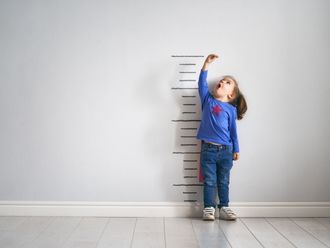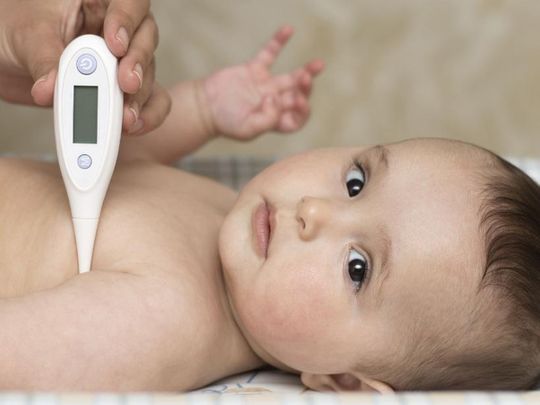
Contrary to popular perception, fevers are not bad in and of themselves. “When an infection occurs, the immune system will launch an attack to try to remove the cause,” says Dr Puneet Wadhwa, specialist paediatrician at Prime Hospital in Dubai. “A high body temperature is a normal part of this reaction.”
Fevers, it seems, actually have an important function. Research in mice has shown that the extra heat of a fever helps immune cells to crawl along blood vessel walls to attack invading microbes, according to a 2019 study reported in Nature.
There’s evidence that the increase of 1 to 4°C in core body temperature that occurs during fever is associated with improved survival and resolution of many infections, according to researchers at the Department of Immunology, Roswell Park Cancer Institute.
And some doctors even argue that lowering a fever with medication is counter-productive and can worsen illness – it might make you feel better, but “You’re not supposed to feel better,” says Dr Paul Offit, vaccinologist at the University of Pennsylvania in an online YouTube video presentation from April 2020 titled ‘Hippocrates Was Right: Treating Fever Is a Bad Idea’. “You’re supposed to stay under the covers, keep warm and ride out the infection,” rather than feel better enough to go out and spread it amongst the community.
Why do we worry so much about fevers?
Although fevers may not be a bad thing in themselves, the extremity of a fever can indicate the level of infection in your body. “If the body’s temperature rises too high, it may be a symptom of a severe infection that needs medical treatment,” says Dr Wadhwa.
During the pandemic, when fever is one of the key signs of COVID-19, it also takes on another level of potential threat and importance. “Any fever could be caused by COVID-19,” says Dr Wadhwa. “COVID-19 manifestations in children so far have been not severe and most children only experience a minor illness and go on to have a fast recovery, but we still do not have sufficient data and knowledge about the full spectrum of COVID manifestations, as the disease is evolving.
“Some children from UK and other countries have been reported to have a severe form of COVID-19 known as PIMS Pediatric Inflammatory Multisystem Syndrome, which requires hospitalization and sometimes intensive care treatment.”
And it’s also crucial to note that even low-grade fevers in young children – especially very young babies – are always cause for alarm and should be checked out by a medical professional immediately.
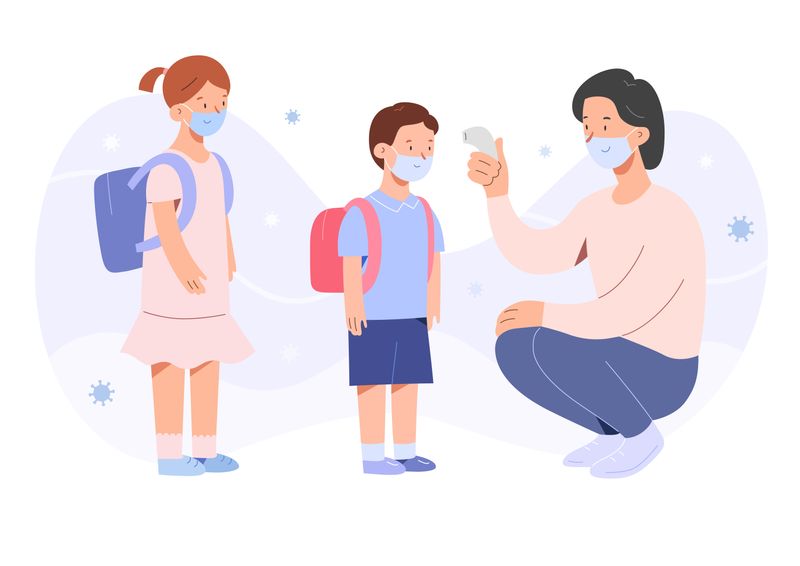
ALL YOU NEED TO KNOW ABOUT FEVERS IN BABIES AND CHILDREN
What causes a high temperature in children?
“Fever occurs when an area in your brain called the hypothalamus — also known as your body's ‘thermostat’ — shifts the set point of your normal body temperature upward,” explains Dr Wadhwa from Prime Hospital. “A high temperature can be caused by many things, the most common of which is infections – generally viral or bacterial infections. An infection is also the most common cause of a fever in adults, but there are other rare causes and a long list of fever causes apart from infections.”
What are the signs that your baby or child has a fever?
“If your baby or child is hot, irritable or crying with flushed cheeks, or feels sweaty or clammy, check his or her temperature,” says Dr Anjana Kannoth, paediatrics and neonatology (specialist) at Aster Hospital, Mankhool.
What is classed as a paediatric fever and has it changed due to COVID-19?
"A body temperature of more than 37.5°C taken orally, or from the armpit axilla that is 37.6°C or above, or a temperature of 38°C or above taken from the ear or rectum, is classified as a fever in children,” says Dr Wadhwa. “Even during the pandemic, the definition remains the same.”
The exact temperature that constitutes a fever can vary from child to child, says Dr Kannoth, “so trust your instincts.”
Research shows that normal baseline temperatures can vary between people by a few degrees, so if you know your child normally “runs cold” then you may want to lower the threshold for what you class as a fever in your child even more. “You know your little one better than anyone else,” adds Dr Kannoth. “If you are worried, contact your paediatrician.”
What should you do if your baby or child has a fever?
For newborns any fever is uncommon and a temperature of more than 37.6°C needs a thorough evaluation. “The same goes for any fever in babies up until 3 months of age as these younger babies may not display any other symptoms and may be harbouring a serious infection,” says Dr Wadhwa. “If an infant of 3 months or younger has a temperature of 38°C or above, seek emergency medical attention. In very young babies, even a slight fever can signal a serious infection.”
In non-pandemic times, older children with a low fever can be monitored, continues Dr Wadhwa. “Children aged more than 3 months old who have a fever but a temperature of lower than 38°C and are otherwise active and feeding well with no other symptoms can be given paracetamol and monitored,” says Dr Wadhwa. “See your doctor if a child has a temperature of over 38.5 C and is not active, not feeding well or vomiting.”
Immediate advice should be taken if fever is high grade more than 38.5 C or child has other symptoms of poor activity, dullness, vomiting or refusal of feeds.
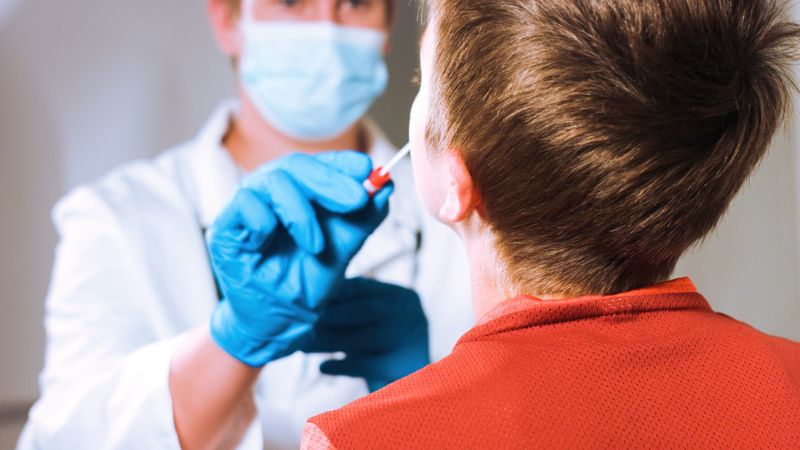
Has the way we respond to a fever changed due to COVID-19?
“Yes, we should be more cautious, but do not panic about the situation,” says Aster Hospital's Dr Kannoth.
During the COVID-19 pandemic, extra caution is required when children experience a fever – even if they are feeling well - since any level of fever could suggest they have the virus and could therefore spread it to others. Most doctors will recommend that your child gets a PCR test. Keep your child at home from school or nursery and isolated from others in the community while you await the results.
During the pandemic, the rest of the family should also self-isolate if one of your children has a fever, until COVID-19 can be ruled out, says Dr Reena Sankar, Specialist Paediatrician, Medcare Medical Centre: “If anyone in the family has a fever then medical evaluation and tests as decided by the physician are needed before the other family members - including the nanny, parents and older siblings - can get back to school or work or go outside into public places."
If their PCR test is negative then they can return to school or nursery once their fever has subsided without the use of medication for more than 24 hours. If the PCR test is positive then you will need to follow the UAE’s protocol for those with COVID-19, which includes quarantining for at least 10 days.
Is it enough to touch your child’s head to know he or she has a fever?
“Feeling the child by hand can definitely give an idea of fever, but it’s subjective, so it’s very important to measure the temperature by thermometer,” says Prime Hospital’s Dr Wadhwa.
How should you check your child’s temperature?
Different types of thermometers are available and they have different benefits at different ages, says Dr Wadhwa:
- 0 to 3 months: Rectal
- 3 months to 3 years: Rectal, ear, or armpit
- 4 to 5 years: Oral, rectal, ear, or armpit
- 5 years to adult: Oral, ear, or armpit
“The most reliable method to check the baby's temperature is the ear thermometer, which is a more accurate technique than the skin, forehead or armpit-based recordings,” says Dr Reena Sankar, specialist paediatrician at Medcare Medical Centre, Motor City.
Digital thermometers are preferred, and you should never use an old-fashioned glass mercury thermometer due to the risk of breakage (mercury is poisonous).
Armpit readings can frequently be inaccurate, while young children may find it difficult to co-operate with an oral thermometer reading.
But ear thermometers can be less reliable with very little children because of their small ear canals.
What can cause a falsely high or low temperature reading?
Warm or Cold fluids or food taken just before temperature measurements in oral cavity can give false readings, explains Dr Wadhwa. “Exposure to sun just before measuring temperature can also give falsely high reading.”
How likely is it that a baby or child’s fever is caused by COVID-19?
“With the current pandemic situation any fever can be caused by COVID 19. However there are many other factors to consider, like exposure to a CVOID 19 patient. So your doctor can evaluate the child as a whole and look for many other factors before deciding the likelihood of any fever being caused by COVID 19.” However, since so many symptoms of COVID-19 overlap with common colds and flu, the only way to be sure that it is not COVID-19 is by taking a PCR test.
Can teething cause a fever or is this an old wives’ tale?
“Teething often increases body's temperature by 0.5°C but high fever is unlikely to be caused by teething,” says Dr Wadhwa.
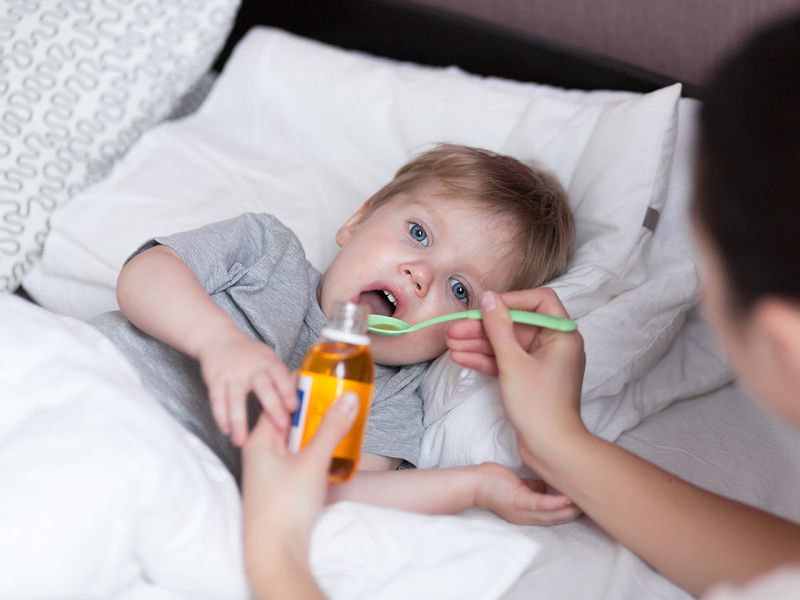
When and how can I treat a fever at home?
Children who are more than one year old and have a mildly elevated temperature up to 38.5°C can be given paracetamol and monitored at home for 1-2 days, explains Dr Wadhwa.
“Immediate advice should be taken if the fever is high grade (more than 38.5°C), or if the child has other symptoms of poor activity, dullness, vomiting or refusal of feeds.
What medication is safe to use for a fever in children?
Paracetamol is generally safe to use as per recommended doses and frequency for 1-2 days
“For brufen and all other medicines its not safe to use them without consulting a doctor,” says Dr Wadhwa.
When should I seek urgent medical attention for my child?
All the symptoms associated with harmless viral fevers can also occur in more serious illnesses. You know your child better than anyone else. If your child has a fever with symptoms that are unlike those they have had with fevers in the past, consider the possibility of more serious illness and take them to a doctor or to the mergency room right away.
Is it true that a high fever can cause brain damage in children?
If the cause of fever is an infection which is not in the brain it cannot cause brain damage, says Dr Wadhwa. “When the fever is due to the brain infection called meningitis or encephalitis that has the potential to cause brain damage”.
How common are febrile seizures (fits due to fever) in children and what do they mean?
Febrile seizures occur in 3-5 % of children having high fevers, says Dr Wadhwa. “The underlying mechanism is not fully known, but it is thought to involve genetics, and environmental factors. What we know is the definite association of these seizures with fever in the age group of 6 months to 5-6 years. Parents should give paracetamol for fever in a child, especially when a child is showing irritable behaviour and the fever is high grade. If a seizure does occur, they should put the child in a safe place first of all and make sure he can breathe freely by clearing any secretions from mouth, and then take him or her to a nearby emergency department.”
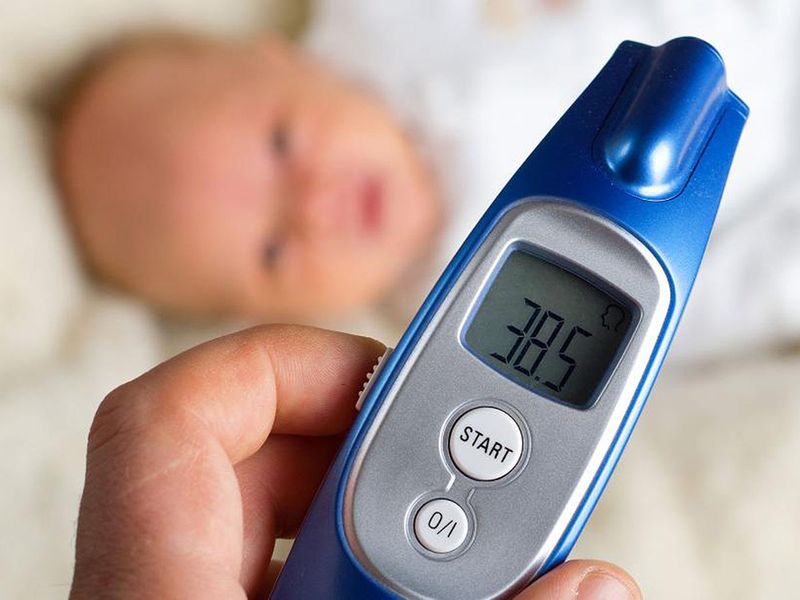
Features of a fever that help reassure you that your child is not seriously unwell
Dr Puneet Wadhwa, specialist paediatrician at Prime Hospital in Dubai, explains the signs that may indicate your child’s fever is less serious (although always seek medical attention if you are at all concerned):
- Has normal-coloured skin, lips or tongue
- Responds to you normally
- Is basically content and will smile
- Stays awake or awakens quickly and easily when you wake them
- Has a strong normal cry, or is not crying
- Has moist lips and tongue
Dry mouth and lips.
Poor feeding in babies.
Reduced wet nappies in babies.
Has swelling of a limb or joint.
Isn't using an arm or leg or isn't able to put any weight on one leg.
Your child is less than 3 months of age and has a temperature of over 38°C.
Your child is aged more than 3 months and has a temperature of over 39°C.
Pale skin, lips or tongue.
Not responding normally to you.
Not smiling.
Wakes only with prolonged effort by you.
Attacks of shivering.
Has had a fever for 3 days or more.
Fits - Seizures






